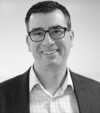Every business has a core management reporting pack produced on a monthly basis that becomes the foundation for reporting requirement. Then there are the operational reports users need to fulfil their roles, for example, a credit controller’s aged debt report.
Many users of Microsoft Dynamics already use tools to quickly produce the basic reports (trial balance, profit and loss and variations to show by department, product line etc). This ability to quickly and efficiently produce reliable reports often revolutionises finance teams whose time had previously been spent attempting to reconcile data in endless spreadsheets.
“He who increases knowledge, increases sorrow” Ecclesiastes / “knowledge is porridge” The Thick of It
Popular culture has warned us that too much information can be a double-edged sword! Too quickly the relief from worrying about data accuracy is replaced with the job of understanding the information produced. Turning the knowledge to power is the trick of working good Business Intelligence.
As reports raise questions about underlying causes, BI empowers users to uncover the patterns that lead to fine tuning operations and uncovering new opportunities to increase revenue.
The three examples that follow, courtesy of Jet Reports, provide business cases for investing in your BI strategy. 5 Eye-Opening Examples of How Business Intelligence with Dynamics NAV Fuels Results.
Business Case One: The Manufacturer’s Sales Team
Citing tight profit margins in their new product line, the CFO of a beverage manufacturer instituted strict limits on discounts. The sales team was livid. Creating barriers to their relationships with customers was a huge step back. To compete effectively, they needed flexibility to negotiate with customers based on account profitability, not specific products. The loss of a key account proved the sales team right.
The solution came through a BI initiative that empowered the sales team with information. With access to combined information for all costs associated with an order, from margin to promotional costs, salespeople had complete information to negotiate profitable deals that benefited both parties.
Build relationships with your customers through BI
Use data strategically to work in partnership with your customers and distributors. Manufacturers can sell more products and build customer loyalty with BI that:
• Optimises product mixes and seasonal inventory.
• Provides the information to price and promote strategically.
• Arms sales teams with actionable information for negotiation.
Business Case Two: The Distributor’s Forecast
There was a time when the sporting goods business was pretty straightforward – stocking baseball equipment in the spring and footballs in the fall. Now, the fast-paced business requires near split -second timing to keep up with the hottest trends. Which was the problem a sporting goods distributor was facing. Overstocks from last month’s hot products were drowning the company in red ink.
Through a move from reporting to business intelligence, the sporting goods distributor tapped marketing data to track regional and online buying trends. Data on seasonal sales and retailer purchases are combined to further refine the forecasting and stocking decisions for the company.
Respond to change quickly with BI
When you can look up and down the supply chain, turning data into predictive information, you can make faster decisions. Distributors can also use BI to:
• Reduce overstocks with better forecasting.
• Work closely with retailers to build demand through well-timed promotions.
• Proactively work with manufacturers to optimise purchasing.
Business Case Three: The Retailer’s Big Store Mystery
The disparity in year-over-year growth between stores of a retail chain was growing. Sales at larger footprint stores were lagging, especially in high-margin items. While there was lots of speculation,
there was no comprehensive set of data that could deliver the analysis needed. Management decided to implement a BI solution to learn the truth.
Through analysis of sales and employee data, they found a surprising correlation. The larger footprint stores had a far higher percentage of part time workers. The retailer had a policy that only full time workers received formalized sales training, including upsell techniques. The policy was changed and now part-timers know how to position higher-margin products with customers.
Uncover correlations with BI
Policies and processes can lead to unexpected and difficult-to-uncover results. BI allows you to look at issues from different angles to find solutions. Retailers also use BI to:
• Optimise inventory across stores and warehouses.
• Analyse online purchase trends to predict in-store sales.
• Spot customer trends to predict future behaviour and proactively promote products.
The first step on a BI journey is to ensure you have great data to work with. Improving reporting across the business means you are ready to push on to making the information really work by providing “actionable insights”, this means rather than just tell you where you may be bleeding, spot the trends that point to the fix.

